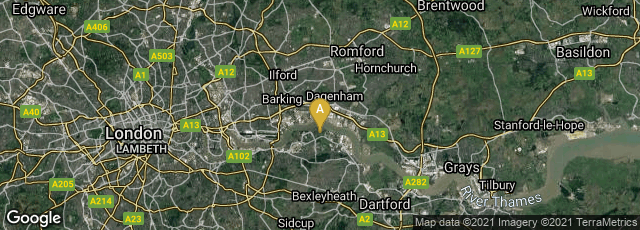
A: London, England, United Kingdom
The upper printed wrapper, somewhat worn, was preserved when this copy was bound in modern cloth. Note the reference in small type to the printer William Clowes and Sons at the foot of the cover. Crediting the printer on the upper cover of a book was, and remains, very unusual. Undoubtedly Knight obtained some kind of printing discount from Clowes in exchange for the advertising.
Having achieved dramatically unprecedented high circulation of 200,000 printed copies per week with The Penny Magazine when he launched it in 1832, London publisher Charles Knight remained one of the leading proselytizers of the use of the new high speed printing technology to produce inexpensive high quality literature. He was also a prolific writer of non-fiction and an historian of the history of books and printing, fond of comparing the limitations of hand-press book production with the advances gained through machine-made paper and steam-powered printing. It was perhaps fitting that in 1844 he initiated the series of monographs called "Knight's Weekly Volume for All Readers" with a biography written by Knight of England's first printer and publisher, William Caxton. Like other books by published in this series, most of which were written by other authors, this was a quality work of over 200 pages with illustrations, but in small octavo format and relatively small type, the format selected, of course in order to retail the book at very reasonable cost. According to an advertisement in Bent's Literary Advertiser in January 1848, by then the series extended to 116 volumes, with each volume available in printed wrappers for 1s, in cloth for 1s 6d, and in morocco, gilt edges for 2s 6d each, in double vols., g.e. for 3s each, and in treble vols., g.e. for 4s each.
Knight followed his biography with a postscript extoling the advances in book production made by the new technology. He wrote, pp. 237-38:
"The Printing-Machine" has done for the commerce of literature what the mule [spinning invention] and Jacquard have done for the commerce of silk. It has made literature accessible to all. It has given us the power of producing a Weekly Volume For One Shilling, for All Readers. We say For ALL Readers. The lowly and the exalted have long each stood upon a common ground—that of the Faith which knows no distinction of persons. We venture to believe that they should meet in the same manner upon the common ground of knowledge...."